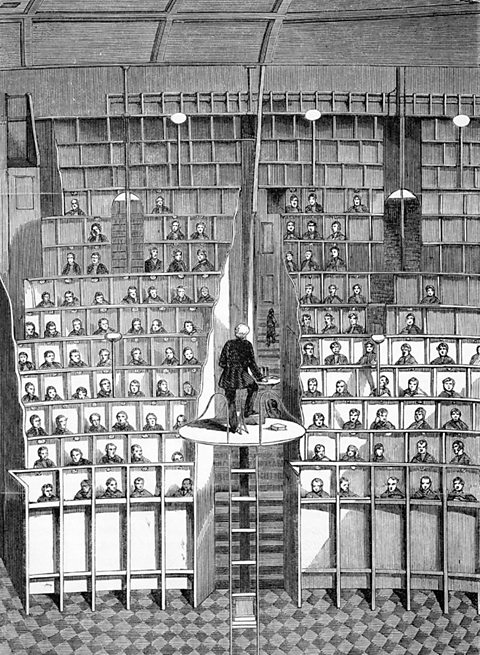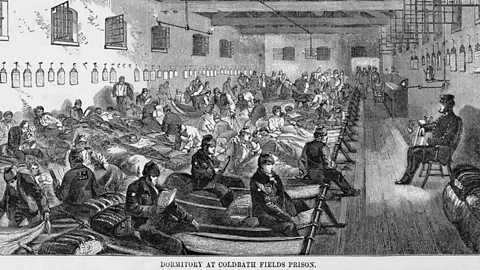New prisons in the later 19th century
In the 19th century, the number of people in prisons grew dramatically. Prison sentences became a far more common punishment as many forms of corporal punishments died out.
Many new prisons were built in the mid and late 19th century. These new prisons were purpose built. Many followed a similar design. The prisons were secure, and allowed for prisoners to have individual cells. In these prisons two different regimes were used to try to reform prisoners.
Beaumaris was the first new prison in Wales in 1830. Cardiff prison was built in 1832, and Swansea prison in 1861.
The separate system

Some of these new prisons were run as separate system prisons. In separate system prisons, prisoners were isolated from each other in individual cells and were kept alone in cells for weeks. Prison chaplains would visit their cells and try to encourage them to live a more Christian, crime-free life.
Prisoners were only allowed out of their cells for exercise and church services.
They had to wear masks when exercising. Special chapels were built with booths to keep prisoners physically separate. Prisoners were put to work sewing mailbags and coal sacks.
Pentonville prison
Pentonville prison in London was the most famous prison that was run as a separate prison. It was designed specially with wings radiating from a central hall. These wings allowed for individual cells for prisoners. Similar designs were then used in 54 other prisons, including Ruthin. Ruthin prison's 4-storey Pentonville-style wing was built in 1878.
The silent system
In silent prisons, prisoners were not kept physically separate but they were not allowed to communicate. Inmates were forced to do boring, repetitive tasks in complete silence. They were made to pick oakum, walk on treadwheels, or turn crank handles thousands of times.
The idea was that the silence and boredom would allow prisoners to reflect on their crimes. The silent system prisons led to increased rates of prisoner suicide and mental health problems.

These separate and silent systems did not lower the reoffending rate in the way it had been hoped. In 1877 the Government brought all prisons under its control. By the 20th century the separate and silent experiments were ended. Prisons began to discontinue the use of pointless hard labour, eg treadmills and cranks, and they were finally abolished in 1902.